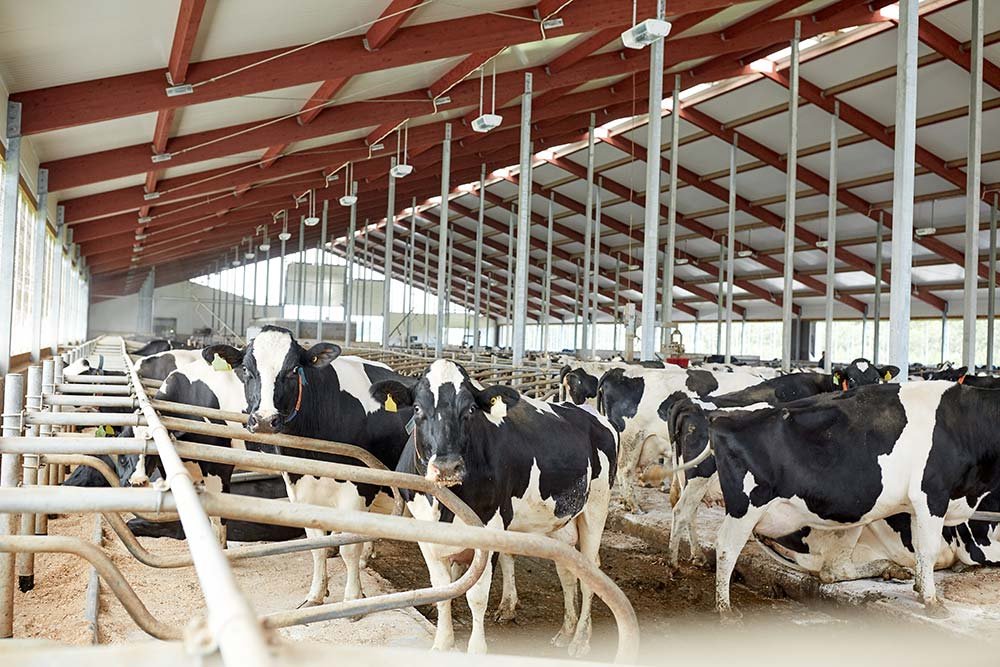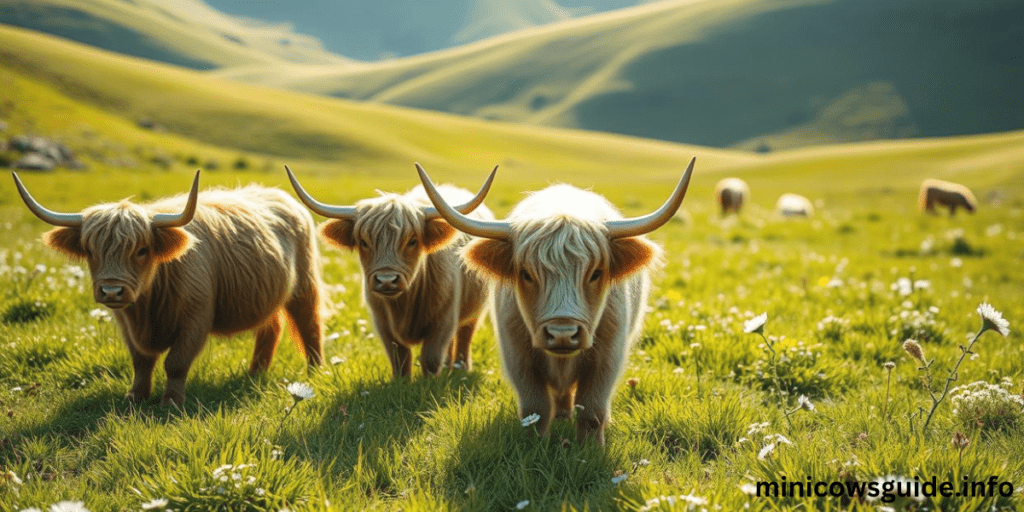
Miniature cows, also known as mini cows or micro cows, are a smaller breed of cattle that typically weigh between 400 to 600 pounds when fully grown. They are a popular choice for small farms, homesteads, and even backyards due to their size, gentle temperament, and low maintenance requirements.
The growing popularity of miniature cows can be attributed to their unique qualities, such as their ability to provide fresh milk, meat, and even manure for composting, all while taking up less space than traditional cattle breeds. Additionally, their small size makes them easier to handle and care for, making them an attractive option for those looking to raise livestock without the need for large pastures or expensive equipment.However, before you bring home your very own mini cow, it’s essential to familiarize yourself with your local regulations
Some areas have restrictions on keeping livestock within city limits, while others may require specific permits or zoning variances. By doing your due diligence and researching your local regulations, you can ensure a smooth and enjoyable experience for both you and your new miniature cow.
Exploring Miniature Cow: Why Size Matters in Livestock Care

Miniature cows are a smaller breed of cattle that typically weigh between 400 to 600 pounds when fully grown, which is much smaller than traditional cattle that generally grow to about 62 inches.
These cows are selectively bred for their diminutive stature, making them more manageable for small farms, or as pets. There are various size classifications within the miniature cow category, each with its own height standards.
. The term “miniature” is not a strict measurement but rather a general category for smaller cattle breeds. These cows are often categorized into three height classifications: midsize miniature cows (42 to 48 inches to the hip), standard miniature cows (36 to 42 inches to the hip), and micro-mini cows (below 36 inches to the hip)
It’s essential to note that these classifications may vary slightly depending on breeding standards and associations. Additionally, height alone might not be the only factor considered when categorizing miniature cows; conformation, proportions, and overall build may also play a role.
Breeders often aim to maintain specific characteristics while selectively breeding for smaller size, ensuring that miniature cows retain their functionality and health despite their diminutive stature.
Miniature Cows: Understanding Zoning Laws and Permitting for Ownership

Checking zoning regulations in your area is crucial when considering keeping miniature cows on your property. Zoning regulations dictate how land can be used and what activities are permitted in specific areas. Failure to adhere to these regulations can result in fines, legal issues, and even forced removal of the animals.
One of the primary concerns regarding miniature cows is often related to the number of animals allowed per property. Zoning ordinances may impose limitations on the number of livestock, including miniature cows, that can be kept on a property. These limitations are typically based on factors such as property size, land use designation, and proximity to neighboring properties. For instance, residential areas might have stricter limitations compared to rural or agricultural zones.
Additionally, zoning regulations may require obtaining permits or special approvals before keeping miniature cows. These permitting processes are designed to ensure that the keeping of livestock complies with local laws and does not pose any nuisance or safety issues to the surrounding community. Permits may involve submitting documentation such as site plans, animal care plans, and proof of compliance with zoning requirements.
Overall, familiarizing yourself with zoning regulations and obtaining any necessary permits before acquiring miniature cows is essential to ensure legal compliance and avoid potential conflicts with neighbors or authorities. Consulting with local zoning authorities or land use planners can provide valuable guidance on navigating zoning regulations and understanding any limitations or requirements specific to your area.
Fencing Tips for Miniature Cattle: Keeping Your Furry Friends Safe and Secure

When it comes to fencing for miniature cows, it’s essential to prioritize security while also considering the smaller size and less robust nature of these animals compared to full-size cows. Here are some tips to ensure your fencing is suitable for miniature cows:
- Fence Height: While miniature cows are smaller than standard breeds, they can still jump or lean on fences, especially if they’re curious or trying to reach greener grass on the other side. Opt for a fence height of at least 4 to 5 feet to prevent them from escaping. This height is typically sufficient to contain miniature cows without being overly imposing.
- Sturdy Materials: Choose fencing materials that are strong and durable enough to withstand the occasional push or nudge from miniature cows. Welded wire mesh, heavy-duty electric fencing, or wooden board fencing are all suitable options. Ensure that the spacing between wires or boards is narrow enough to prevent the cows from squeezing through or getting stuck.
- Visibility: Miniature cows may not be as visible behind tall or solid fencing, increasing the risk of accidents, especially if they’re near roads or other hazards. Consider using fencing with good visibility, such as post and rail fencing or electric tape fencing, to allow both you and the cows to see each other clearly.
- Regular Maintenance: Regularly inspect and maintain your fencing to address any damage or wear promptly. Repair loose wires, broken boards, or weak spots to prevent miniature cows from finding potential escape routes. Additionally, keep vegetation trimmed along the fence line to discourage the cows from reaching over or through the fence.
- Secure Gates: Ensure that gates are securely latched and have no gaps that miniature cows could slip through. Use sturdy gate hardware and consider adding a secondary latch or lock for extra security.
Miniature Cow Care: Shelter, Space, and Basic Needs

Shelter requirements for miniature cows are essential to ensure their well-being and comfort, regardless of their smaller size compared to standard cattle breeds. Here’s a brief overview:
- Shelter Size: Provide a shelter large enough to accommodate all the miniature cows comfortably. The size of the shelter will depend on the number of cows you plan to keep. Each cow should have enough space to lie down, stand up, and turn around without feeling cramped.
- Protection from Elements: The shelter should offer protection from harsh weather conditions such as rain, wind, and extreme temperatures. It should be well-insulated and waterproof to keep the cows dry and warm during inclement weather.
- Ventilation: Ensure proper ventilation within the shelter to maintain good air quality and prevent the buildup of moisture and ammonia from manure. Adequate airflow helps minimize respiratory issues and keeps the cows healthy.
- Bedding: Provide clean and comfortable bedding, such as straw or shavings, to cushion the floor of the shelter and provide insulation against cold surfaces. Regularly clean and replace bedding to maintain hygiene and prevent the spread of diseases.
Regarding basic care needs:
- Food: Miniature cows require a balanced diet consisting of high-quality hay or pasture grass, supplemented with minerals and possibly grain depending on their nutritional needs. Ensure access to fresh, clean water at all times, especially during hot weather or lactation.
- Water: Miniature cows should have access to clean water at all times to stay hydrated and maintain their health. Ensure water troughs or buckets are kept clean and free from contaminants.
- Veterinary Checkups: Schedule regular veterinary checkups for your miniature cows to monitor their health, administer vaccinations, and address any medical concerns promptly. Follow recommended deworming and vaccination schedules to prevent common illnesses and parasites.
Miniature Cattle Resources: Where to Find Helpful Information and Support

- Miniature Cattle Breeder’s Association (MCBA): MCBA is dedicated to promoting and preserving miniature cattle breeds. Their website offers resources, breed information, and a directory of breeders.
- Website: https://miniature-cattle.com/
- International Miniature Cattle Breeders Society (IMCBS): IMCBS aims to support miniature cattle breeders worldwide through education, networking, and breed promotion. Their website provides breed standards, membership information, and breeder directories.
- Website: http://www.minicattle.com/
- American Miniature Jersey Association (AMJA): AMJA is focused on promoting and preserving the Miniature Jersey cattle breed. Their website offers information on breed standards, registration, and events.
- Website: https://www.miniaturejerseyassociation.com/)
Government resources on animal regulations in your area can typically be found on official government websites. Here are some examples:
- United States Department of Agriculture (USDA): The USDA’s Animal and Plant Health Inspection Service (APHIS) provides information on animal welfare regulations, including those related to livestock care and transport.
- Website: USDA APHIS
- Department of Agriculture or Livestock Services: Local or state departments of agriculture or livestock services often have information on animal regulations specific to your area. Search for your state or local government website for relevant resources.
- Zoning and Land Use Departments: Zoning and land use departments within your local government may have information on zoning regulations pertaining to livestock keeping, including any restrictions or requirements for miniature cattle.
- Be sure to verify the accuracy and relevance of information from government resources by checking official websites or contacting the appropriate authorities directly.
Conclusion
Understanding miniature cow regulations is essential for responsible pet ownership. It’s crucial to check local zoning regulations regarding the keeping of livestock, including miniature cows, as these regulations dictate factors like the number of animals allowed per property and fencing requirements. Additionally, some areas may require permits or special approvals for keeping miniature cows, necessitating compliance with specific permitting processes outlined by local authorities.
Ensuring secure fencing and meeting basic care needs such as proper nutrition, access to clean water, shelter, and regular veterinary care are integral aspects of responsible ownership. By adhering to local laws and regulations, not only do owners maintain legal compliance, but they also promote harmonious relationships with neighbours and contribute positively to community standards.
Despite the regulatory considerations, the companionship of miniature cows brings immense joy and fulfilment, as their gentle demeanour, manageable size, and unique personalities make them wonderful additions to farms, homesteads, and even suburban properties.





